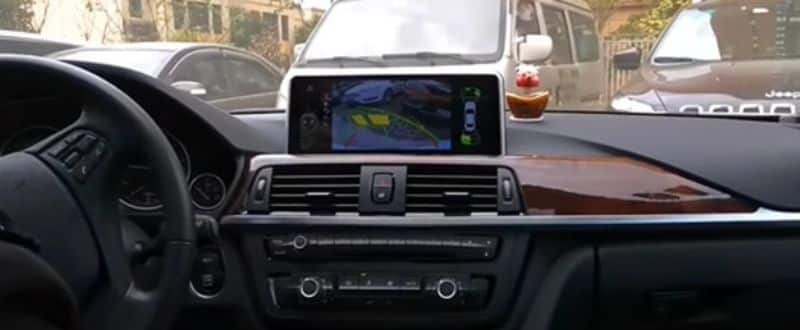It’s annoying and painful to turn your head back whenever you put your car in reverse. So, why take this pain when you can easily hook up a backup camera? Now, you may wonder how on earth to connect backup camera to head unit all by myself! Well, the entire process is super easy than you actually think.
Attach the camera to its position, binge on wiring installation, splice and route your wires, and connect the display. Yes, that’s it! Although the process may require some work, the backup camera installation is not complicated, especially when you have this blog to guide you.
So, let’s wait for no further and fire up to action!
Table of Contents
Connecting Backup Camera to Head Unit in the Most Effective Ways
This section will give you an in-depth understanding of how you can easily connect your backup camera to the head unit. So, without further ado, let’s binge on installing the rear camera.
Attaching the Camera
The first thing you need to do here is turn off your vehicle. Now, safely disconnect your car’s battery terminal. If it’s required, you can also remove the license plate.
Once you’re done with the primary setup, position your camera in its desired place. To ease your way through, take a marker and mark the places where the camera cords will hit the vehicle.

Well, depending on your vehicle type, you may need to remove the door hatch or even the tailgate. Select your required drill bit and drill through the marks you made earlier.
Note: While drilling, make sure there are no cables or wires around that can possibly get damaged.
When you’re done, attach a rubber grommet to the metal edges, so the wire stays protected. Now, run the camera wire through the hole and attach it through your supplied hardware.
Binge on With the Wiring Installation
Once you’re all set, connect the wire cluster to your backup camera wire. This will separate into:
- Video cable
- Reverse signal wire
- Power cable
Note: For a cleaner look, you can always have a look at your manufacturer’s wiring loom and route the overall wiring in that manner.
Now, look for your camera’s power source. It can either be a license plate light or a reverse light. Once identified, find the negative and positive wires from this light source (use a multimeter for this).
Finally, link the camera wire to the light wire (positive with the positive and negative with the negative. You can also get this done with a splice or even a Posi-Tap connector.
Splice the Wire (If you don’t have Posi-Taps)
Likely, you might not have Posi-Taps around you. In this case, you can always splice all the wires together. From our experience, I shall highly recommend you to have a military splice because, with this champ, you won’t have to bother with soldering.
Now, with a wire stripper, cling on to the positive wire and simply remove a segment of the plastic wearing to get the copper revealed. Once done, separate the exposed copper section in two.
This will aid you in putting the positive camera wire through the copper wiring. Twist and wrap the positive camera wire around the light wire to bridge a stable connection.

Finally, tape up the entire connection for protection and safety. The exact process will be repeated with the negative wire.
Routing Your Wires
Well, depending on your vehicle type, you can determine whether you want the wires through your car’s headliner or under the floor.
In either case, partially detach or (if required) remove any carpeting headliner, trim pieces, or even door rubber.
Once detached, tuck in the two wires and run them through the front of the vehicle. Finally, put the trim pieces back, which you just removed.
Get the Display Connected
After you have your monitor in place, it’s time to connect it to the signal, power, and video wire.
Sometimes the monitor’s power cable can be directly linked to the fuse box and a spliced adaptar.
So, in such cases, take a multimeter and determine the best spot to attach your power cable. Also, ensure that the fuse stays off when your ignition is off. Otherwise, the overall connection can drain the overall battery.
In other cases, your power wiring might be hooked to an existing stereo unit. So, here’s how you can proceed:
1. First, trim all the pieces that can possibly hinder your reach to the stereo wiring.
2. Now find the power wires for your stereo.
3. Once you’ve figured it out, connect the positive and negative accordingly.
4. Next, connect the reverse trigger wire to the reverse signal wire and then connect your video wire.
5. After all the wires have been properly installed and connected, reattach all the trim pieces which you removed.
Closing Step
After fitting in all the wires, now it’s time to reconnect your battery terminals. While executing this step, stay careful and wear protective gloves to prevent electrocution.
Once the terminals are connected back, start the car. Now, put your vehicle in reverse and check if the monitor displays the rear view feed. If it works, turn the engine off, and you’re all set.

However, if it’s otherwise, you need to go back to the previous steps and figure out possible errors hindering the connection.
Bottom Line
Without question, a backup camera is essential for optimum driving. It not only helps you get around better, but even ensures you don't get into certain accidents.
So, knowing how to connect backup camera to head unit can surely make your driving less painful. I believe after going through this blog; you can now easily install the rear camera and even perfectly deal with the wiring.
Yet, if you want, you can always take an expert's assistance to install your rear camera.
Relevant Posts You may read-out:

I’m the founder of CarAudioHunt, where I share over a decade of hands-on experience in car audio—starting from my early days in a car garage in 2013. With a background in wiring, assembling, and tuning, I created this platform to offer practical guides, expert tips, and unbiased product reviews for DIY car audio enthusiasts. My goal is to make CarAudioHunt the leading global resource for car audio knowledge, built on trust, quality, and real-world expertise.
